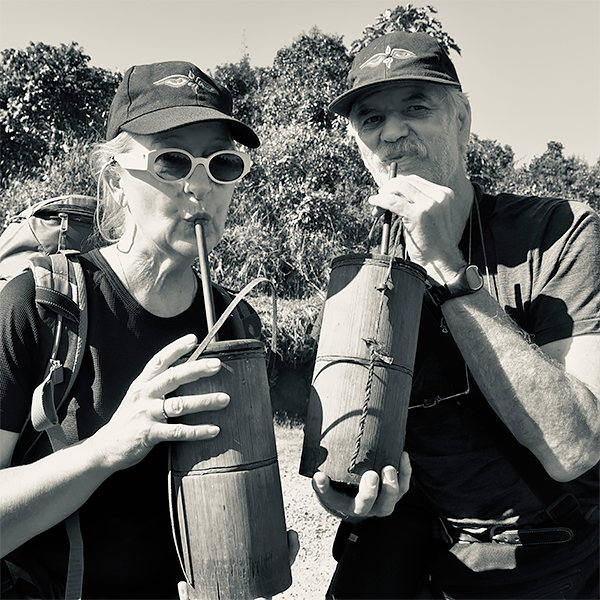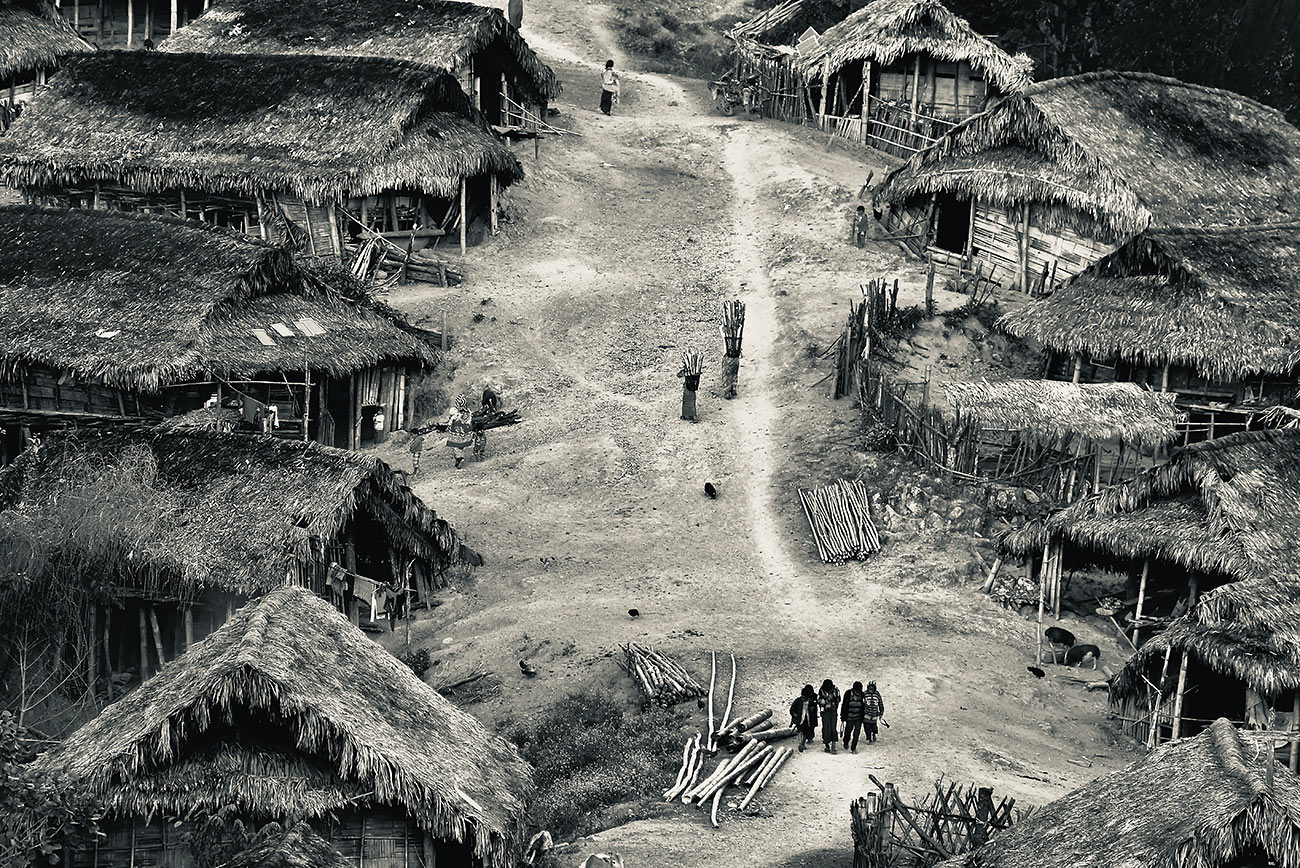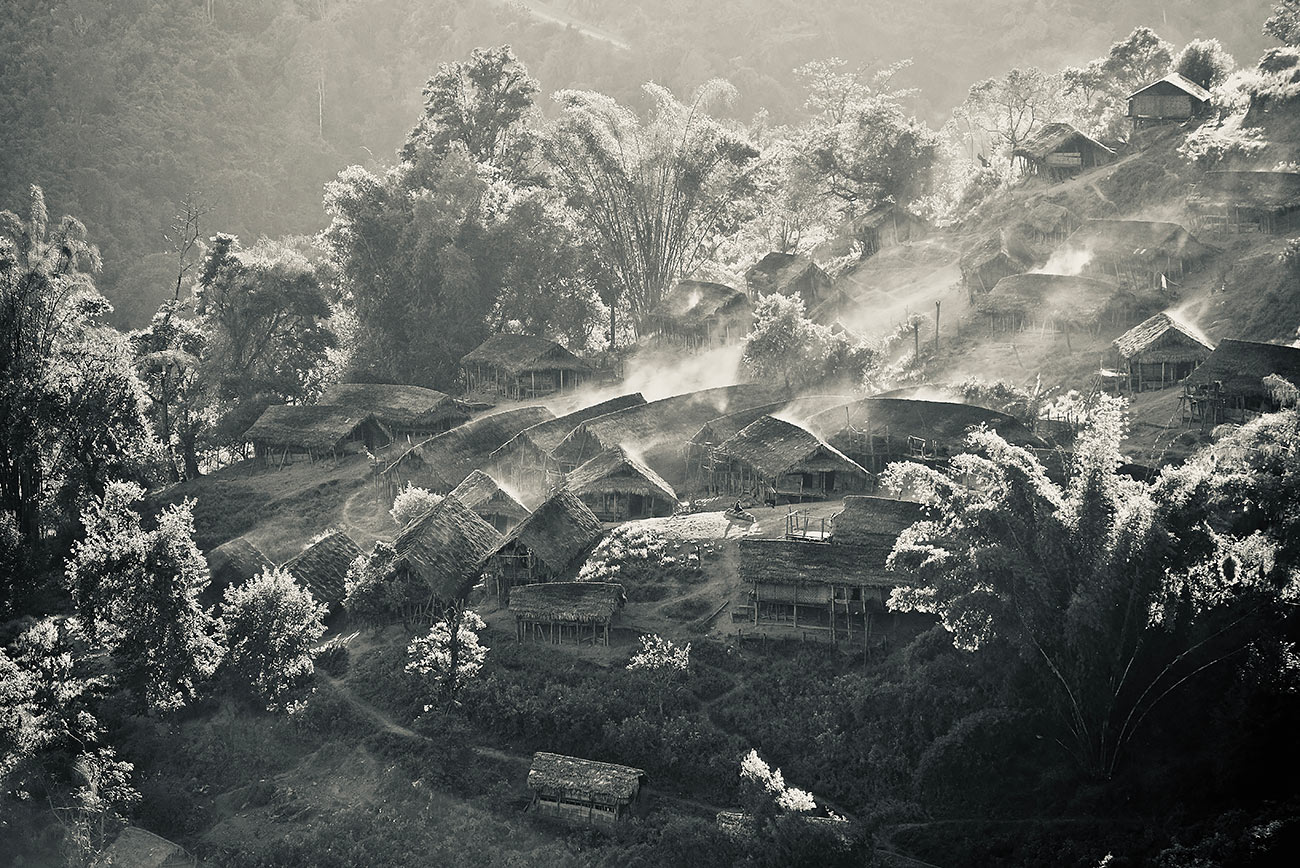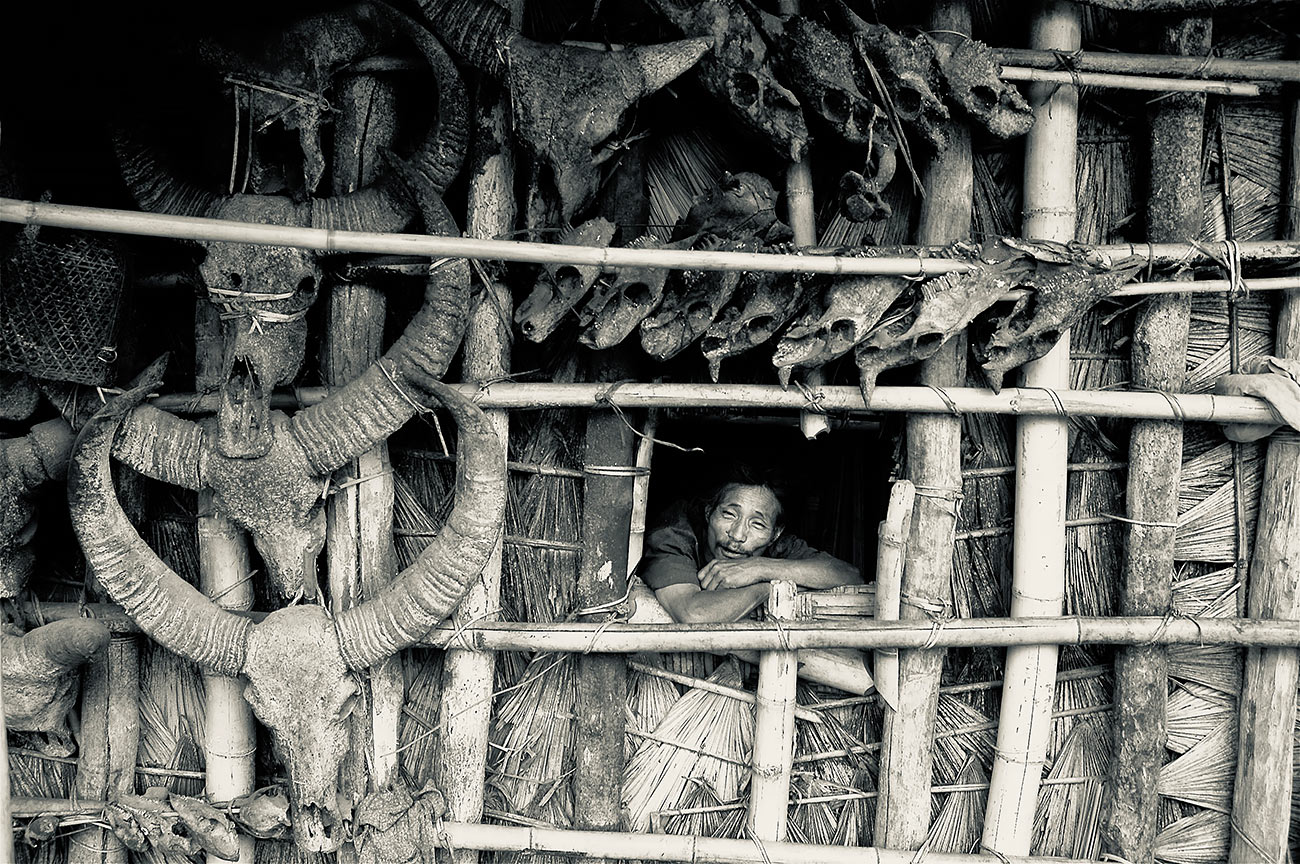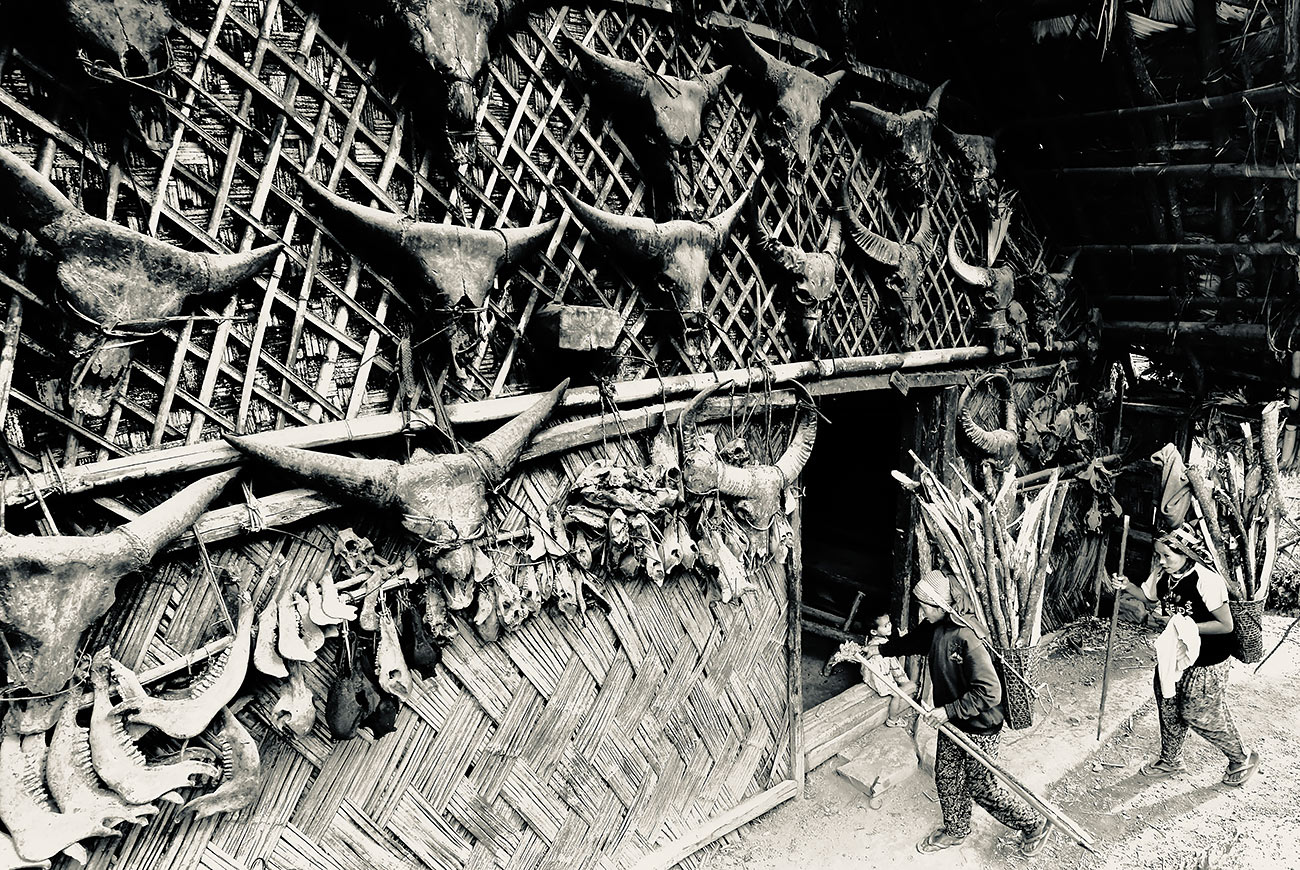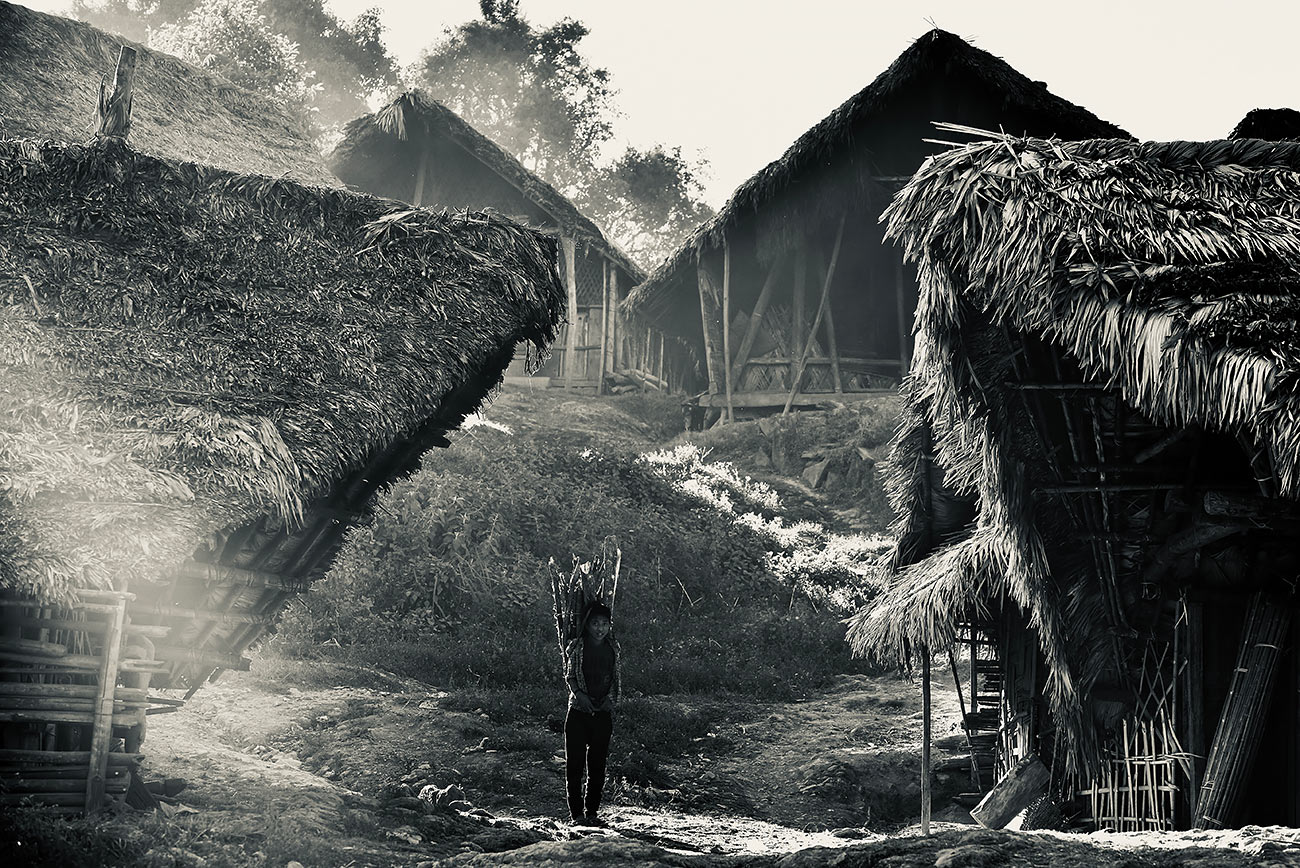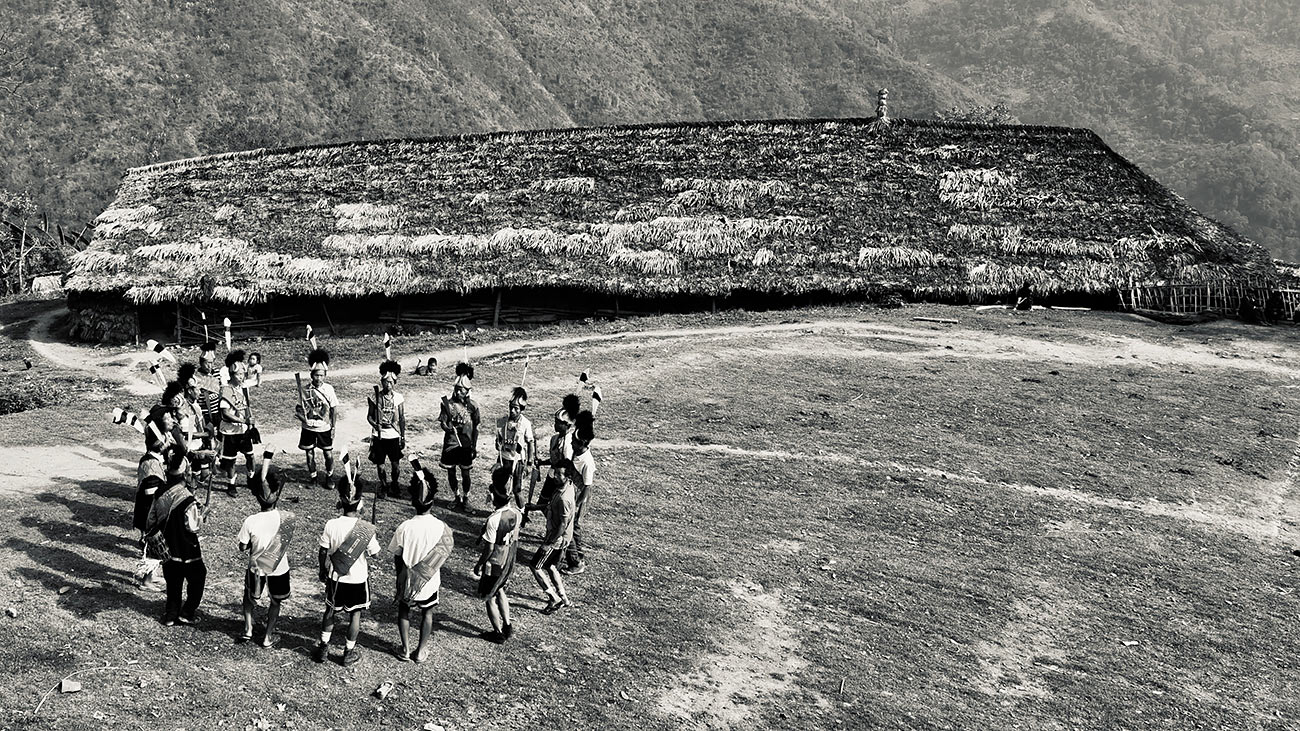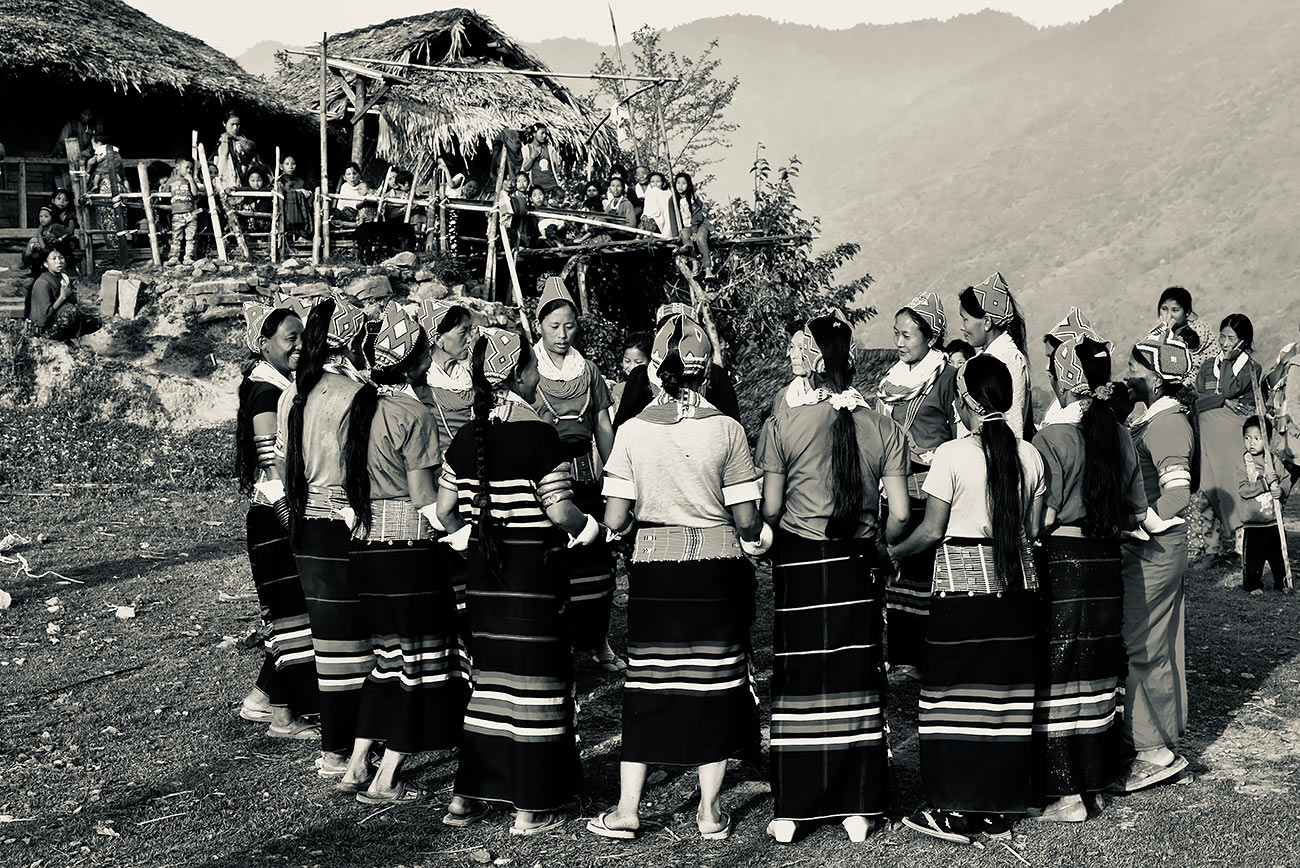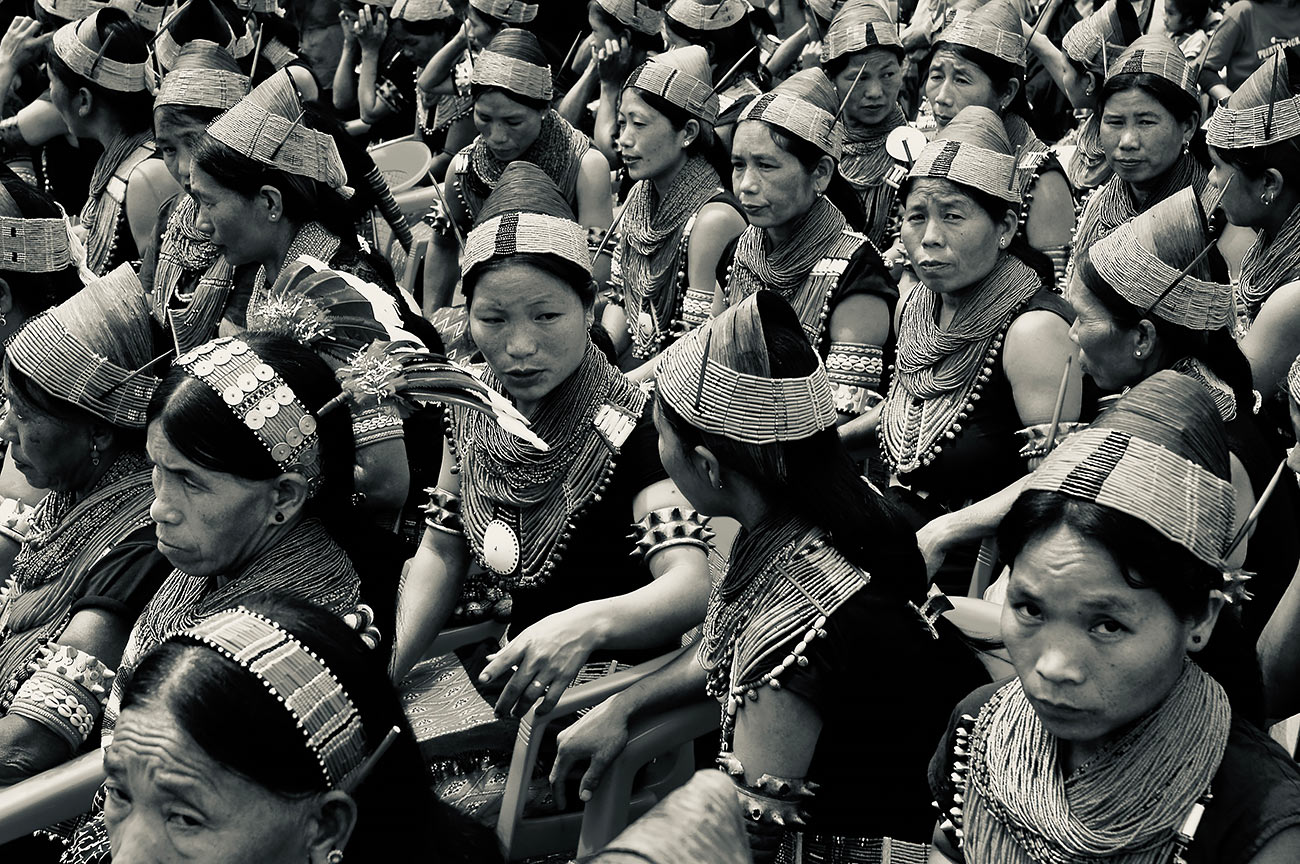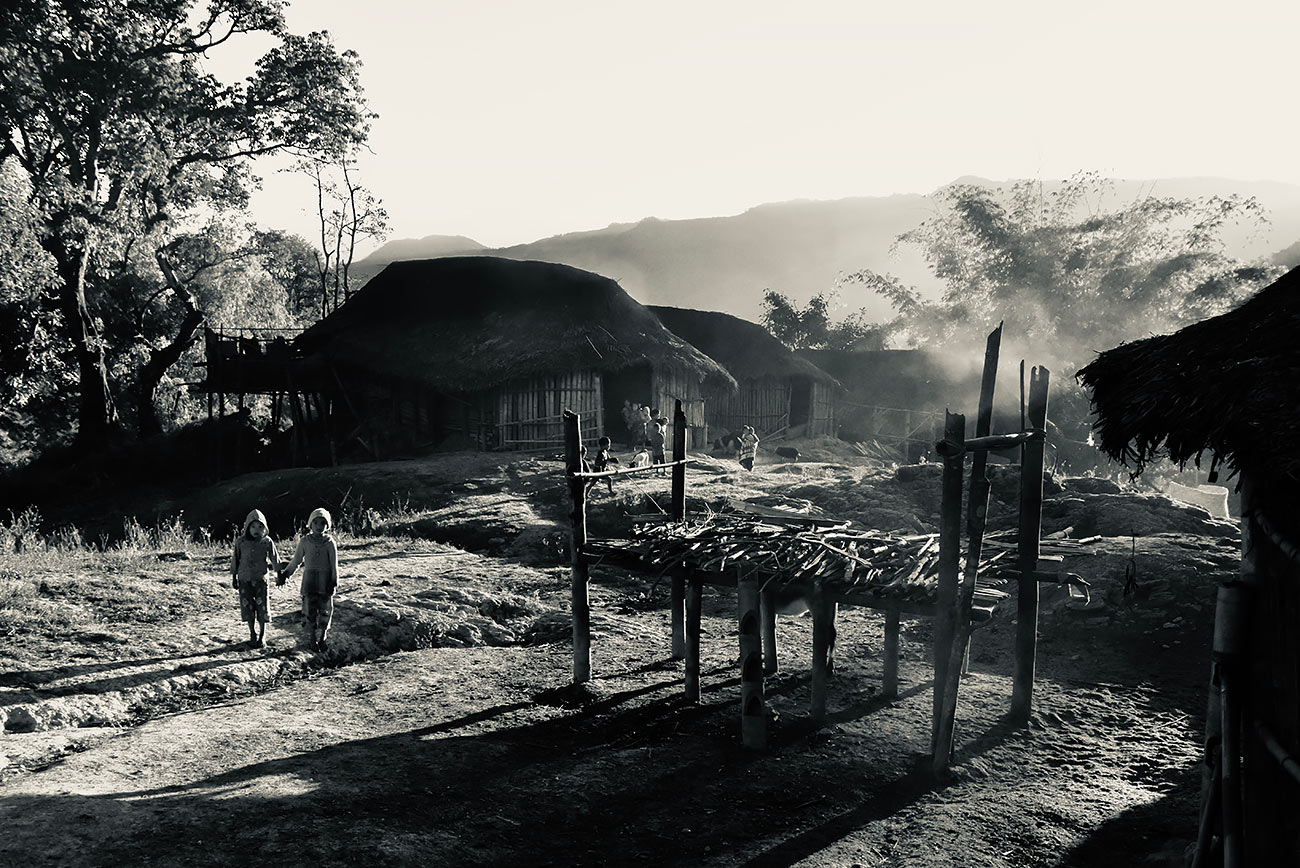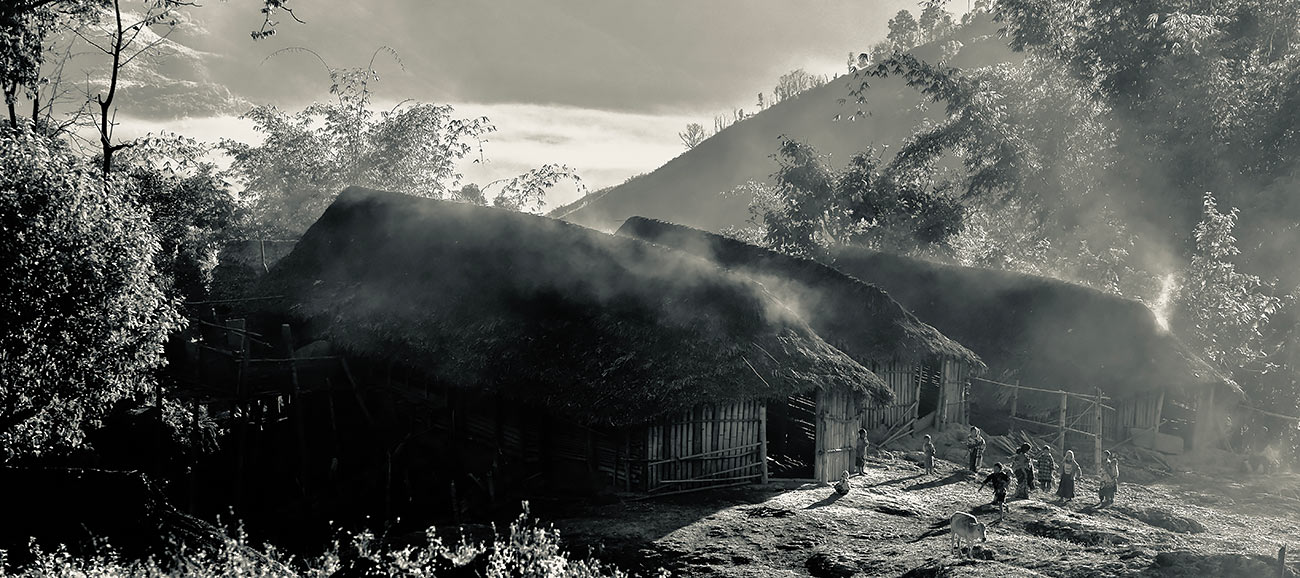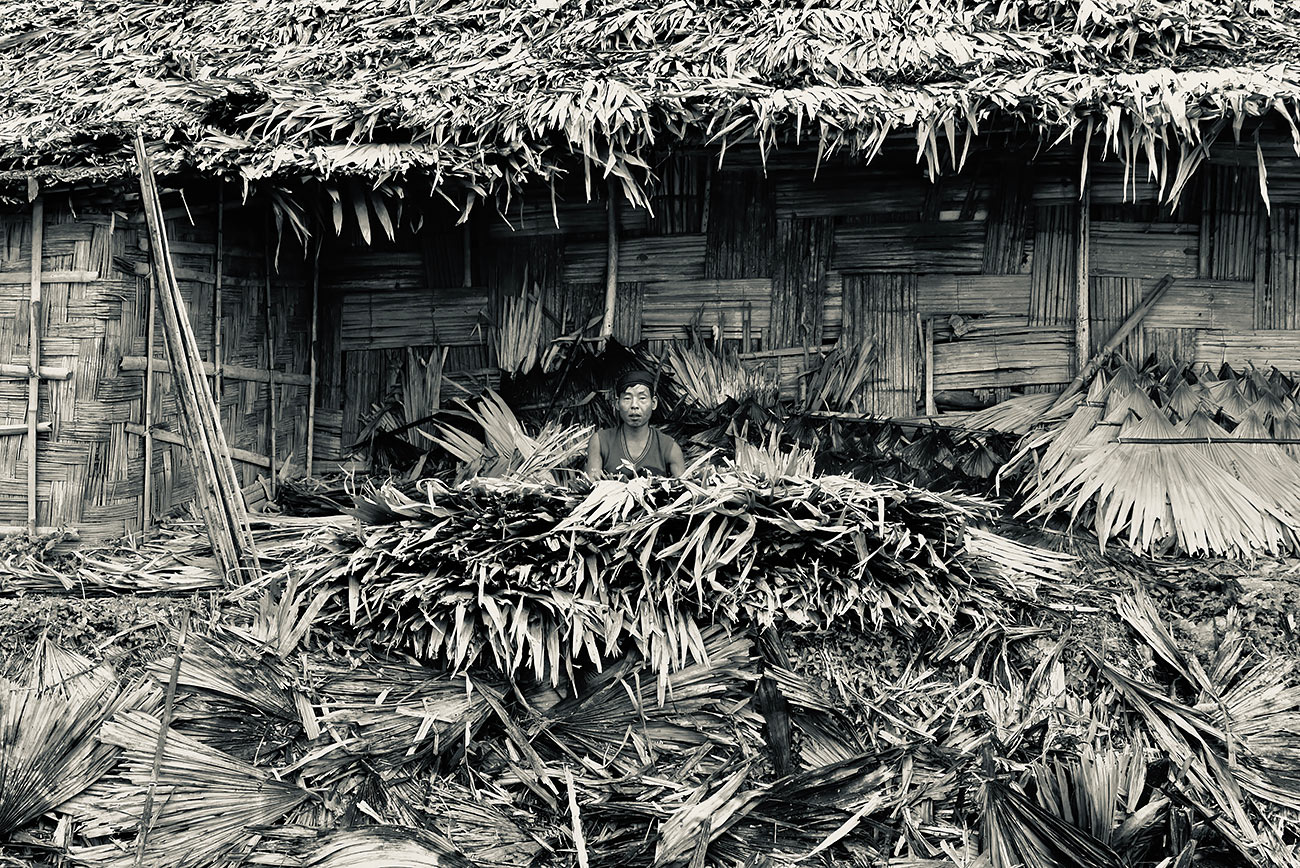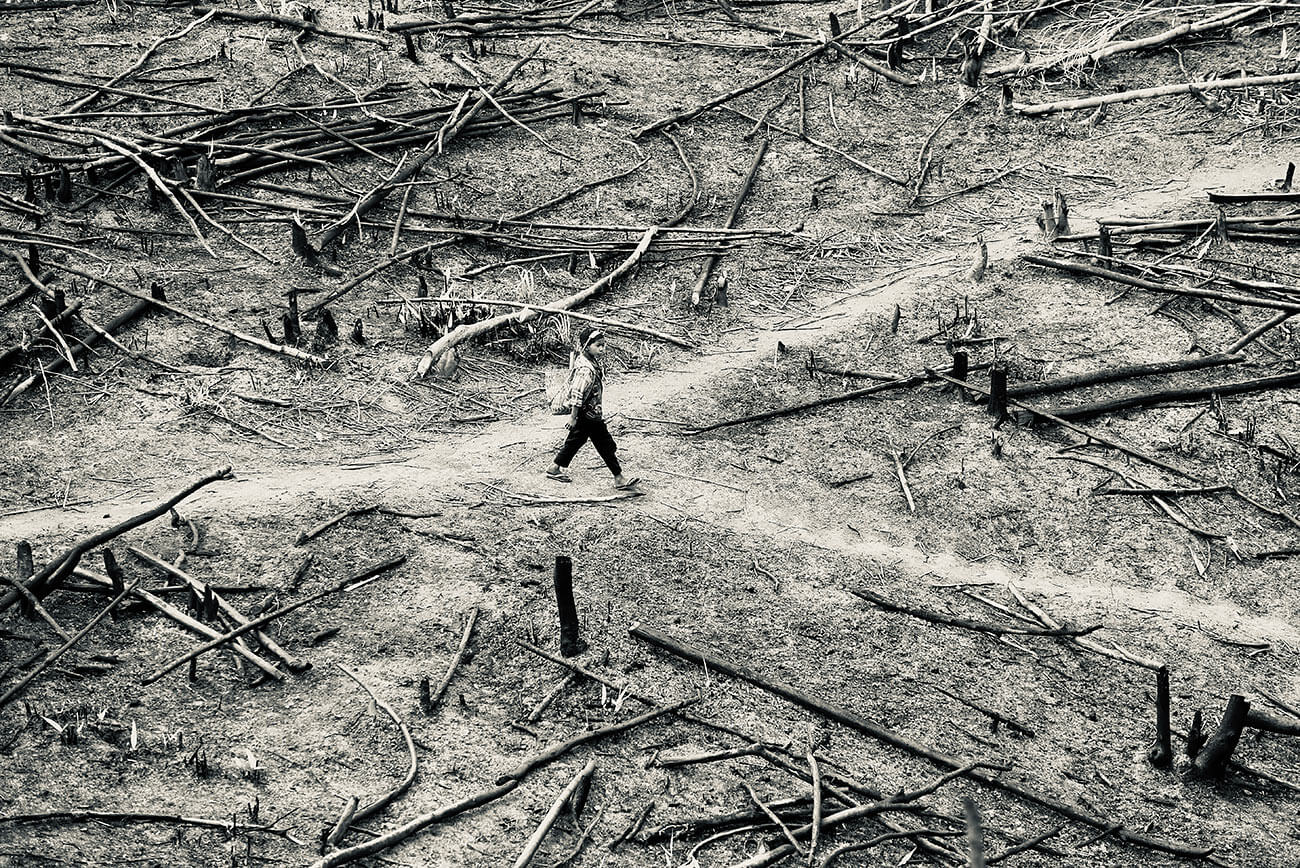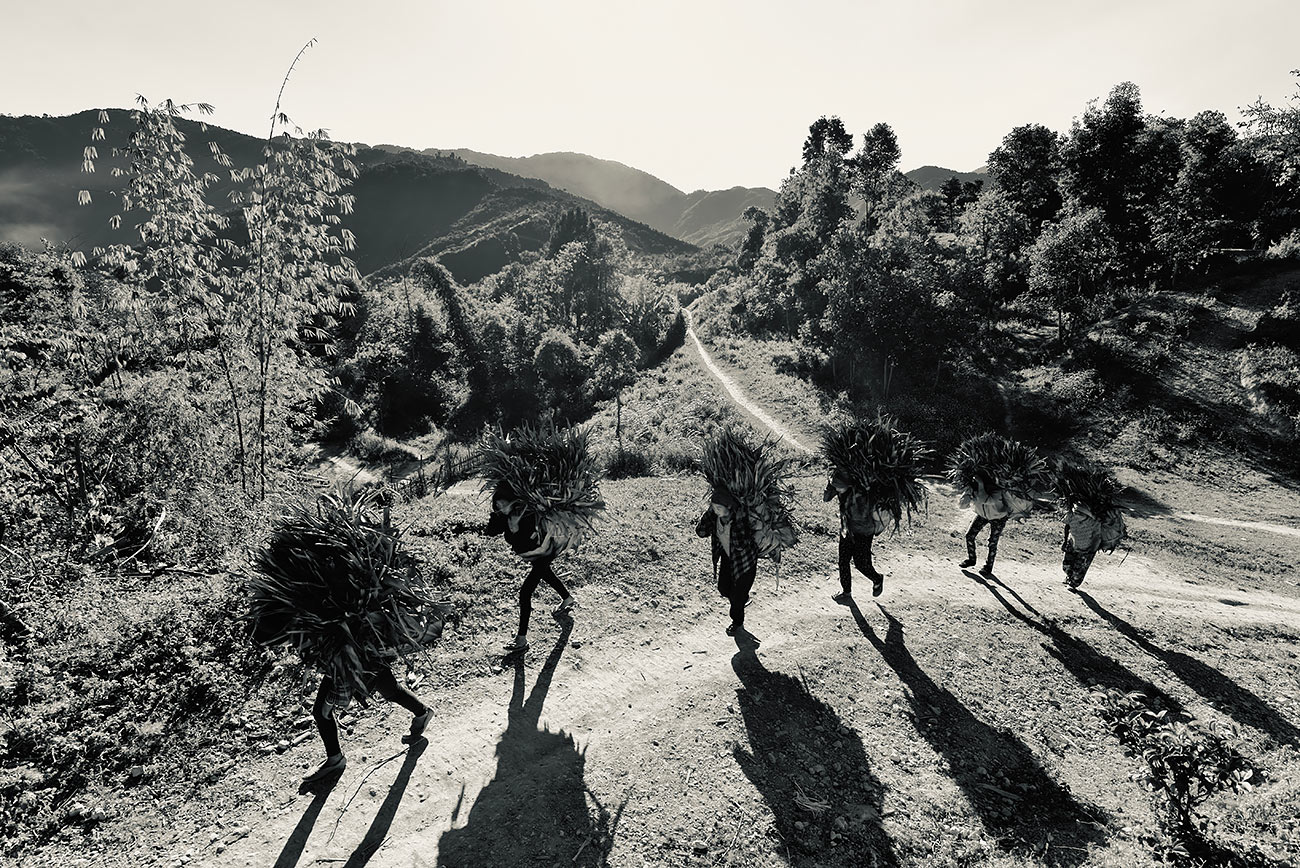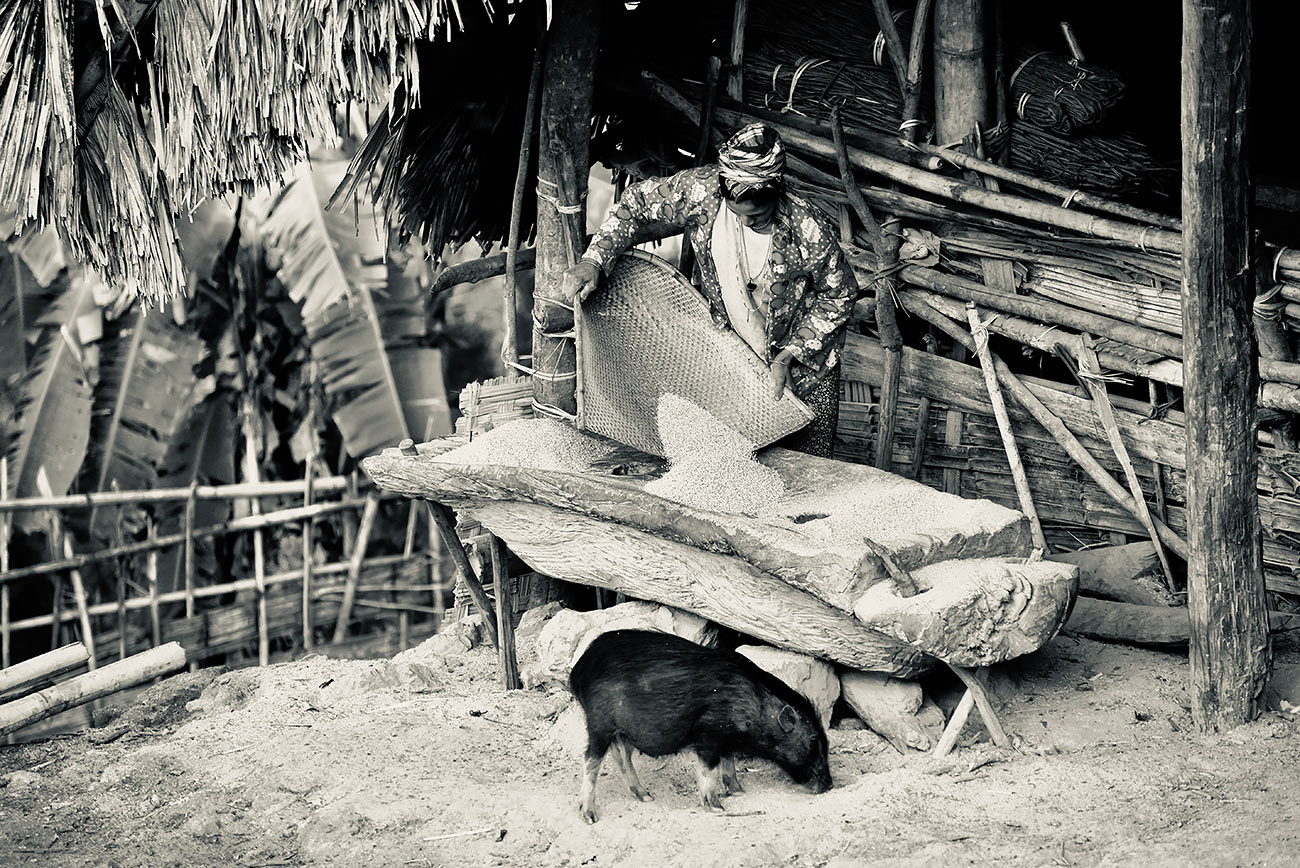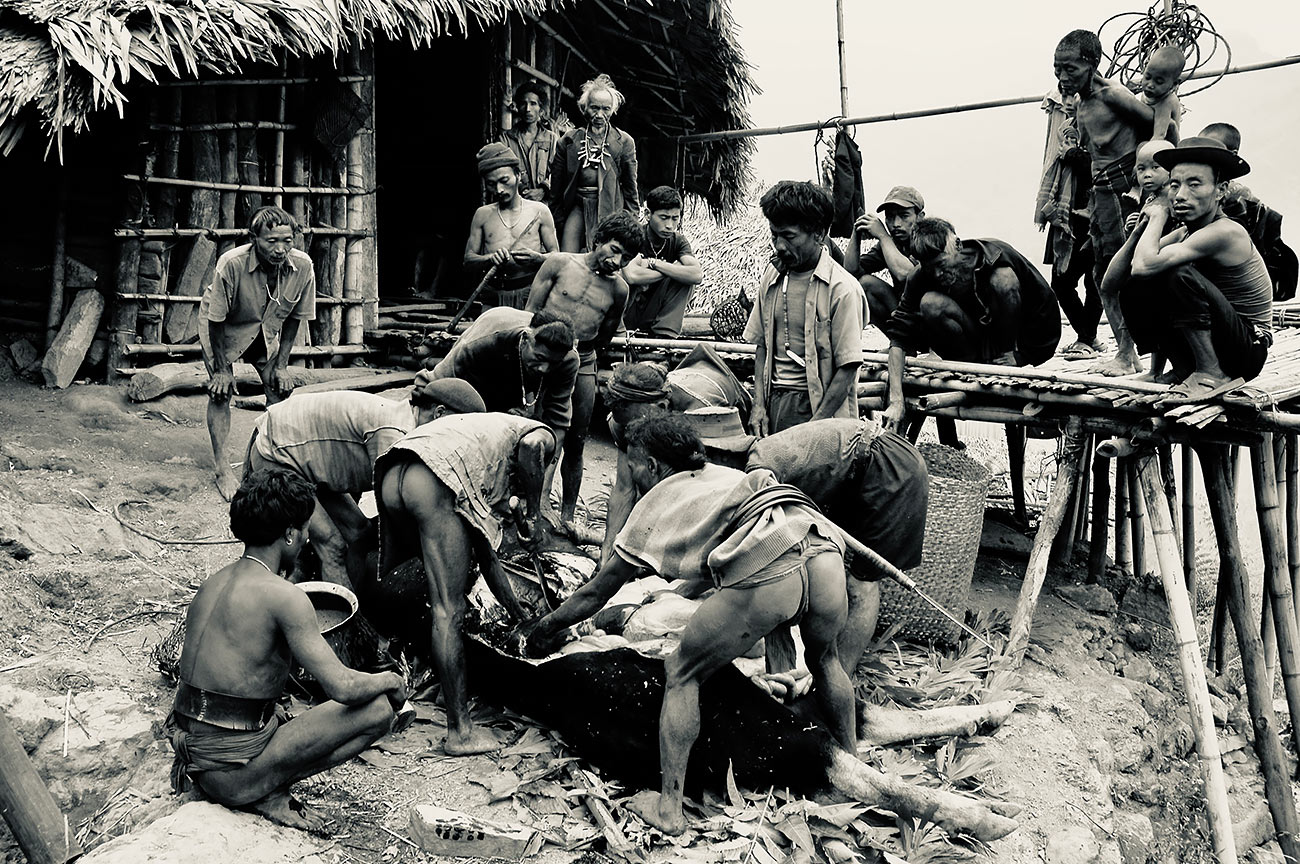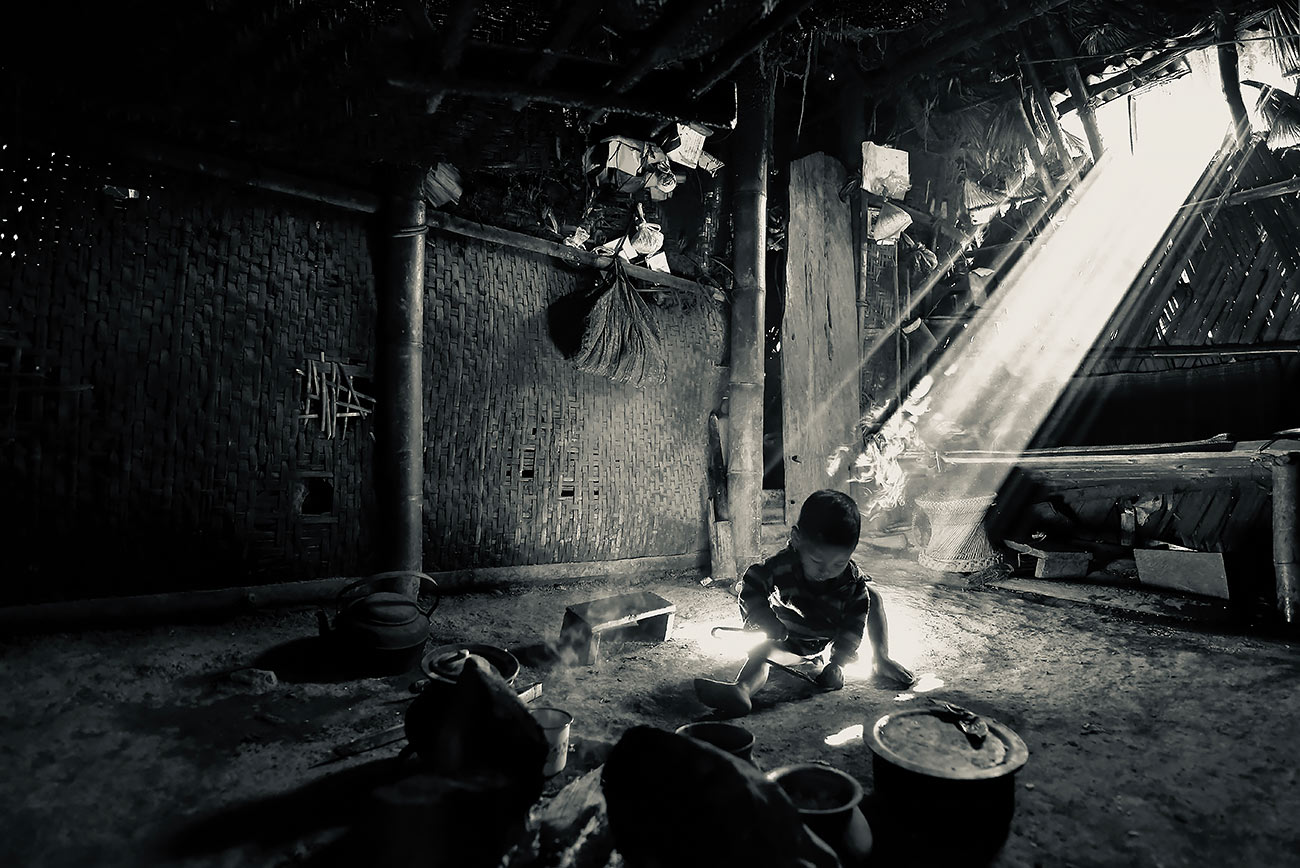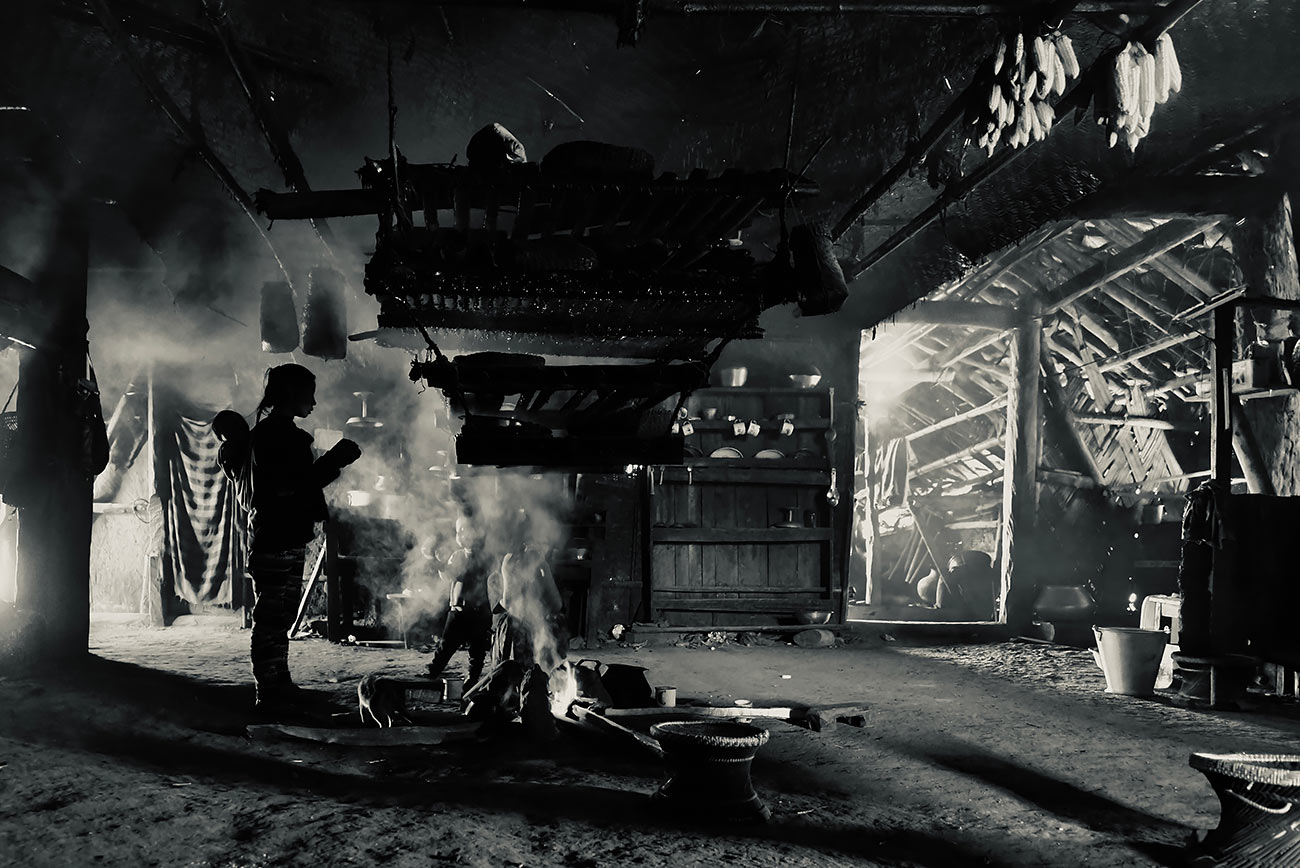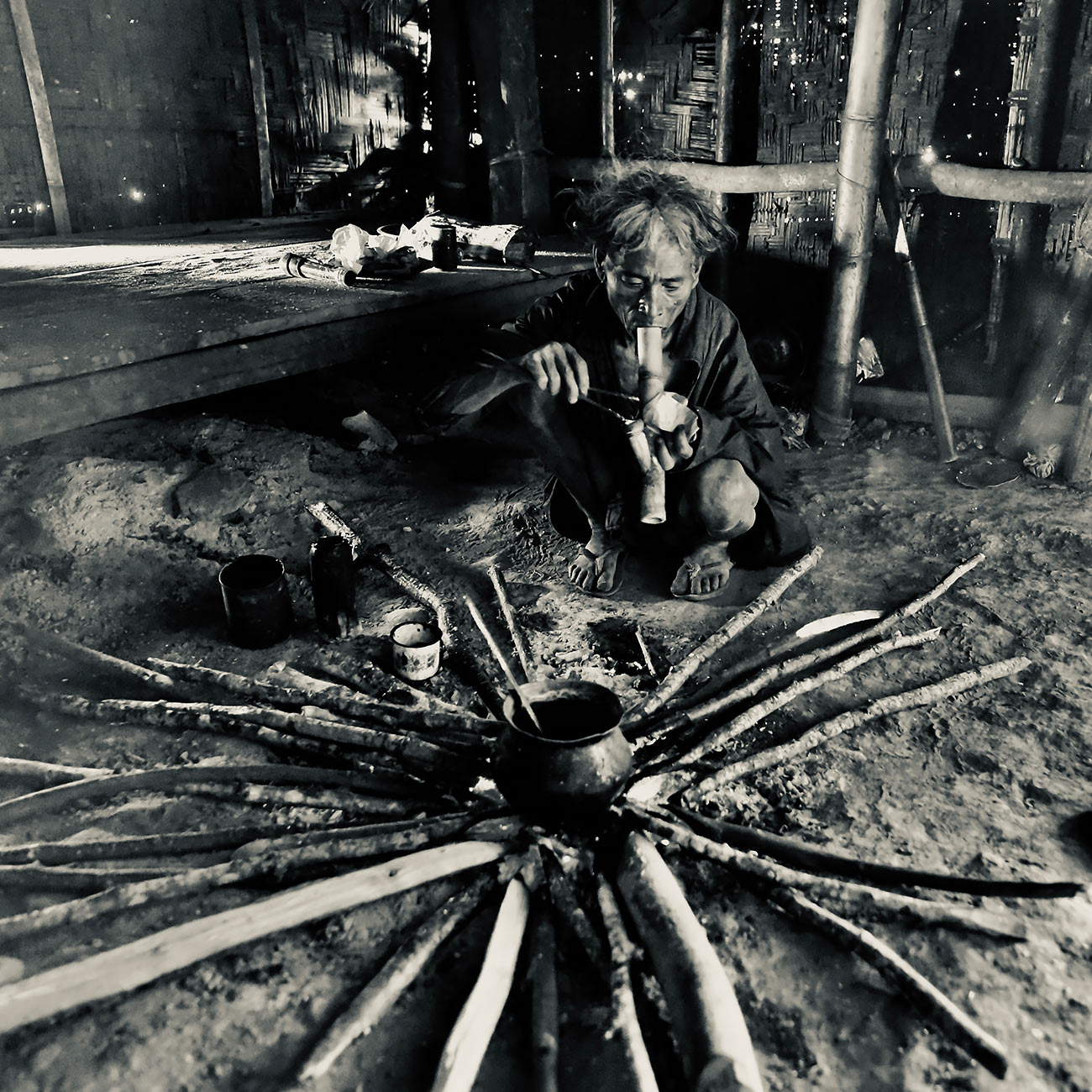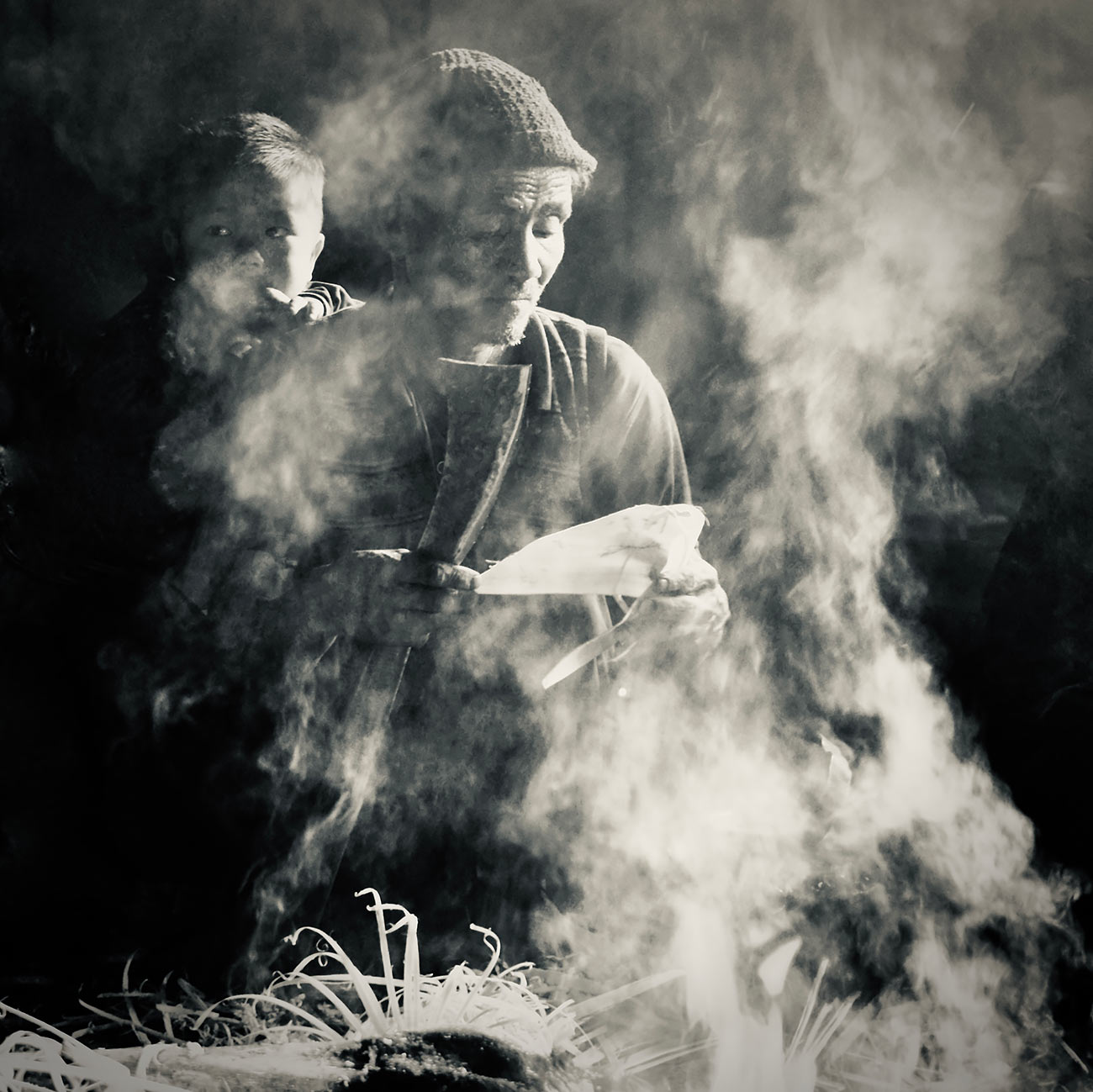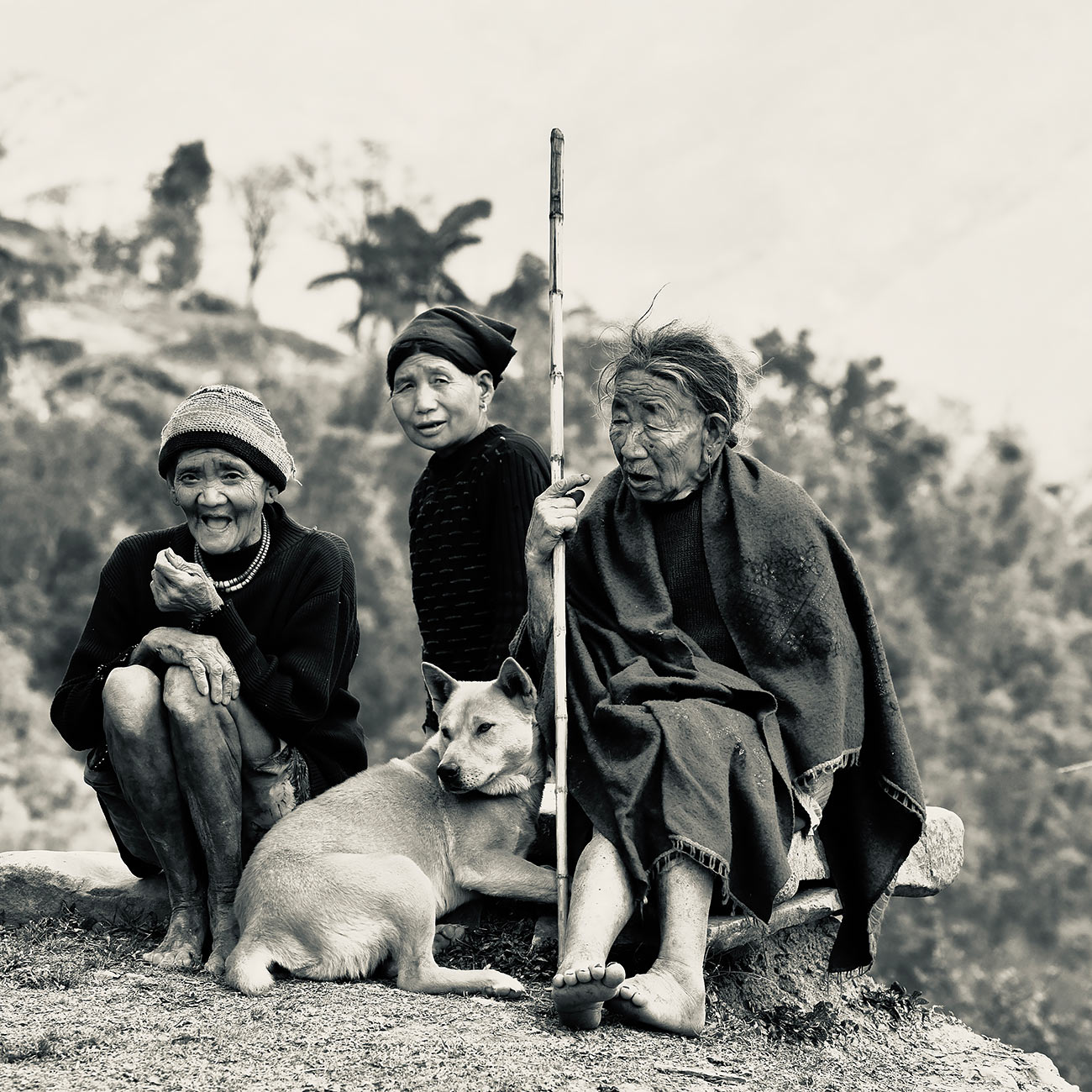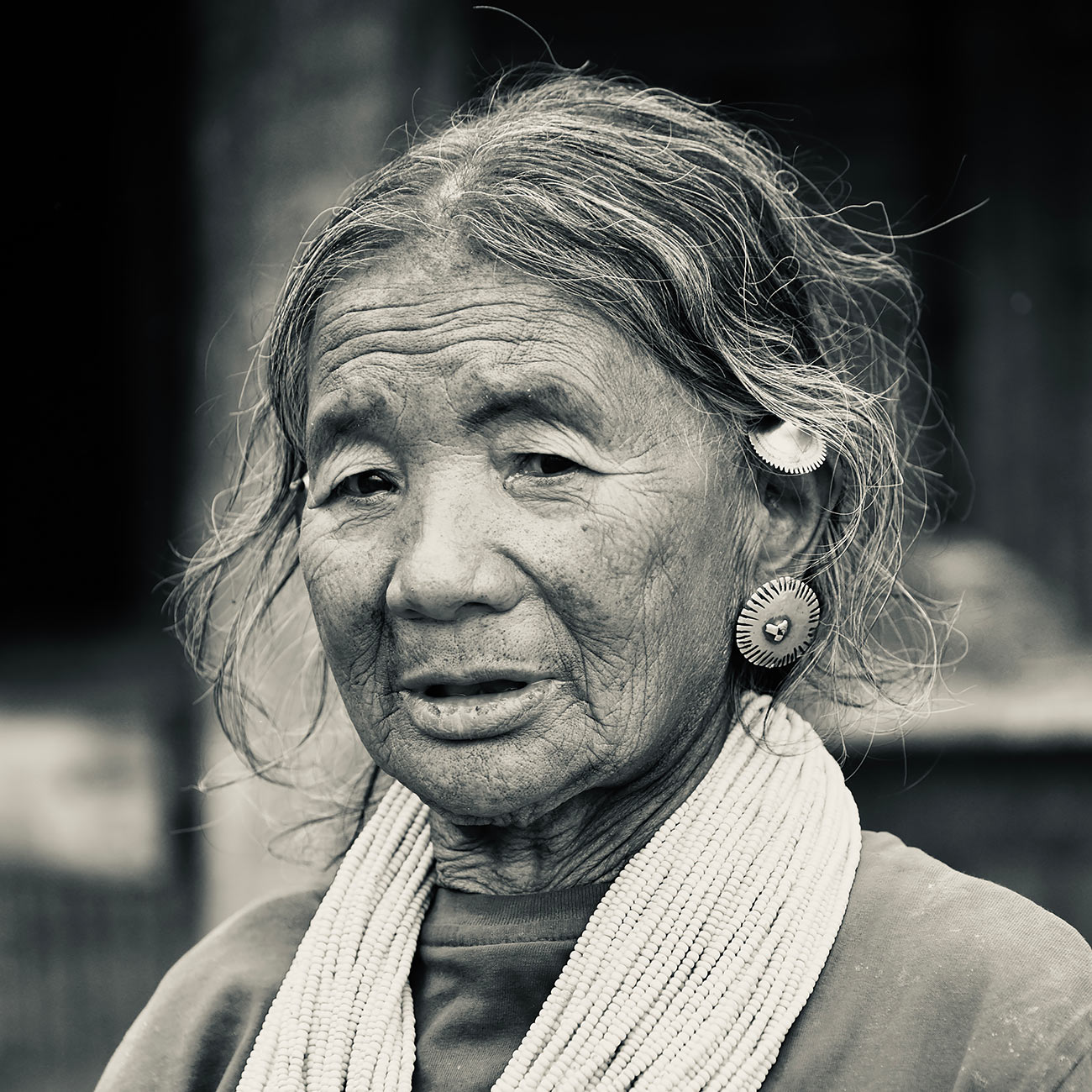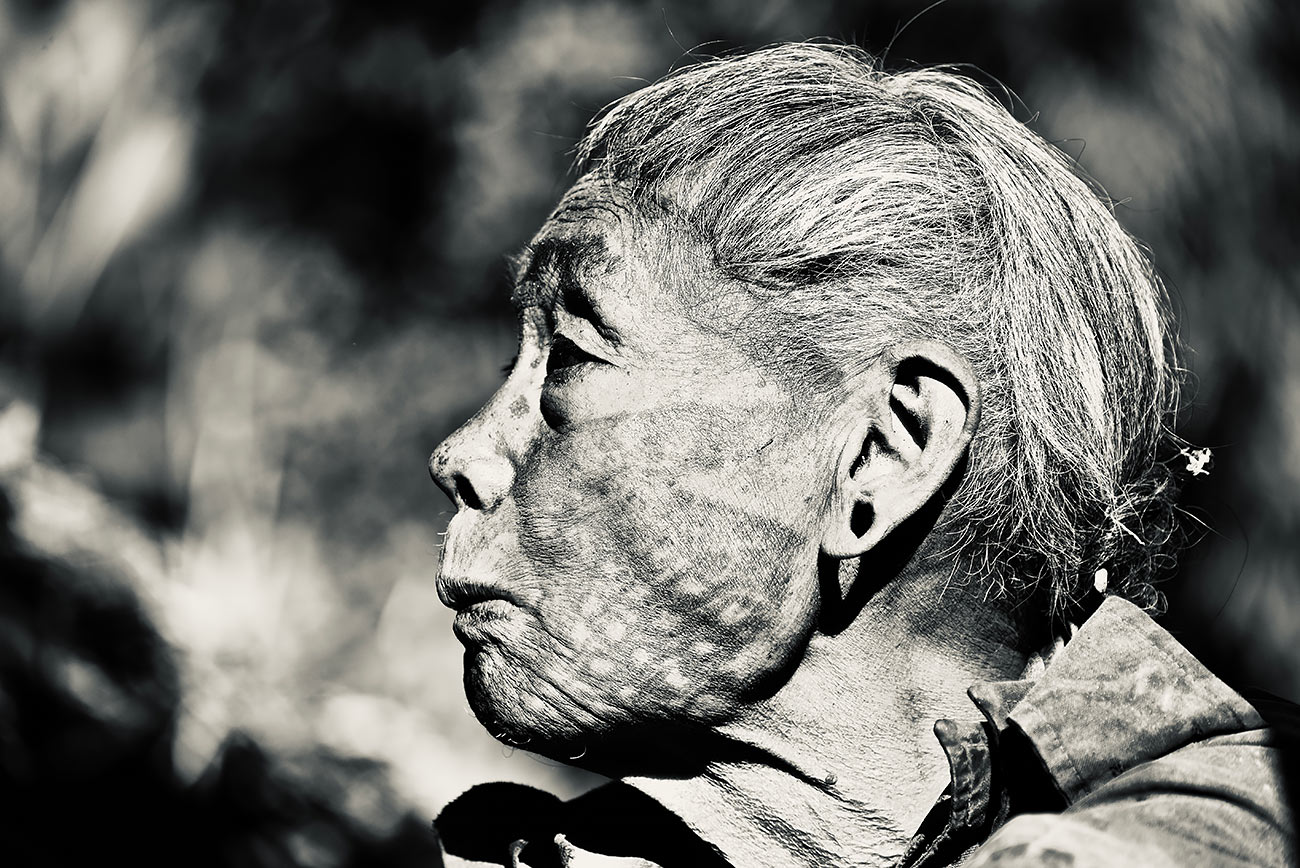Already two years ago we visited the Naga villages of Layong and Konyak, located in the remote border area to India. Now again we are exploring the Naga Hills in Burma. The only way to reach them is by motorcycle. The villages are too far apart for us to reach them on foot in a day's walk in the heat. There are only rudimentary dirt roads. They often end abruptly at a rattan suspension bridge.
We first visited the Naga in 2007 on the Indian side. Years later, I looked at our then travel route again on Google Earth and accidentally crossed the border to Myanmar. On the satellite image I saw that there are numerous intact villages here, which can take up in their originality with the most beautiful in India. They are mostly located on a ridge of the 4500 to 5500 feet high hills and consist of 100 to 250 longhouses covered with palm leaves. It took several years of intense effort before we received permission from the Burmese government to visit these villages. Thus, we are often the first Western visitors and are given a correspondingly warm welcome. In general, the contact is characterized by mutual shyness. However, our interest in the people and their magnificent longhouses is met with openness and encouragement.
As soon as we reach a village, the first thing we do is look for the village chief. We are then allowed to pitch our tent in his house near the fireplace. During the village tour in the company of the chief, we are given an insight into their daily life and offered warm rice beer from a huge bamboo cup. As a special welcome gift, I am occasionally presented with a raw egg. So that we do not come empty-handed, we have taken food, tiger balm, and other coveted but harmless medicines. How humbly the people live, becomes clear when an elderly woman we observe embroidering says, I've had a hard life, but this is a happy day, I've never been so richly blessed.
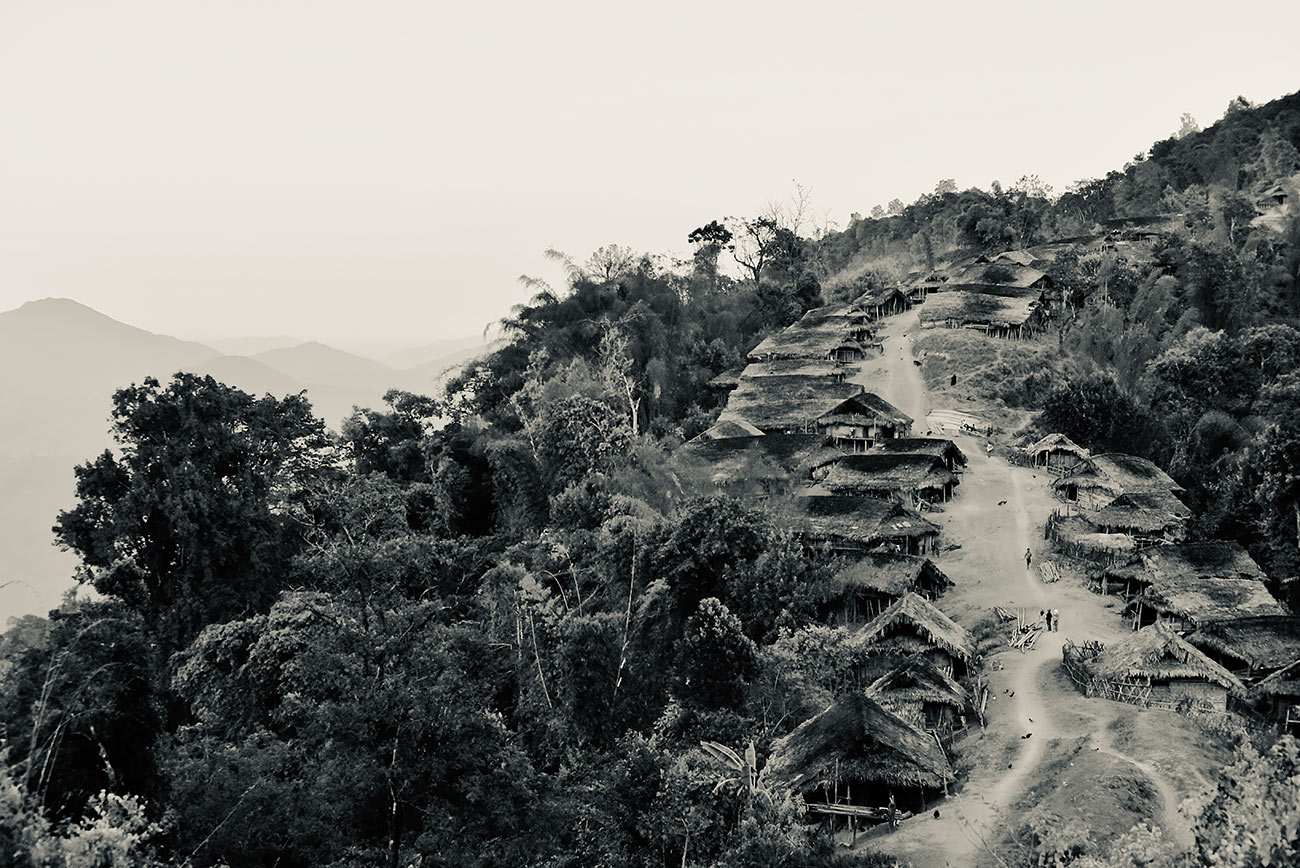
Often the wooden supporting logs of the house entrances are decorated with carved animals such as stylized tigers and hornbills, sometimes skulls or abstract symbols. The roof is re-covered every five years with dried palm leaves in several layers. Inside, hung like hunting trophies, are the skulls of the animals eaten by the families, especially mithun (a semi-domesticated species of buffalo), game of all kinds, but also corn on the cob for drying. Racks full of baskets and other kitchen utensils, blackened by the smoke, hang above the fireplaces.
No matter what the activity, the Naga do it together. Everywhere we see children sitting and playing together or helping their parents with their work. Children as young as four get their siblings tied to their backs. Even older brothers, uncles and fathers carry children around. We also meet many elderly people. Most of the elder villagers still have their faces decorated with the typical facial tattoos.
Shortly after sunrise, women and men, often together with the smaller children, leave for their fields. In the burn-cleared steep slopes, rice, corn, millet, taro, cassava, various types of beans, pumpkin and leafy vegetables are cultivated. Meat or fruits rarely complement the daily menu. Only shortly before sunset do the workers return to the villages, the collected firewood and crops loaded in large woven baskets.
But even these isolated villages were not entirely untouched by outside influences. From India, the Naga were Christianized starting in the late 19th century, mainly by American Baptist missionaries. Nowhere in the world were they as successful in doing so. Today, 80% of the Naga are Baptists. Since the faith community demonizes alcohol, this has resulted in the affected villages no longer producing traditional rice or corn beer. Instead, cheap Indian whiskey and opium are increasingly consumed.
The reason for this, our third trip to the Nagas, was an invitation from a village chief two years ago to come back when they celebrate the Aoleang festival in early April. At the Aoleang festival, the Konyak celebrate the arrival of spring and pray for a good coming harvest. On the festival days, as we experienced eleven years earlier on the Indian side and now again in several villages on the Burmese side, all the men and women adorn themselves with their traditional dresses. Some of the men wear a helmet decorated with wild boar teeth, a necklace with dog teeth and brass heads as a symbol of headhunting, a shield and a spear, and a bag decorated with monkey skulls and tufts of hair. Dancing is separated by sexes. The women form a circle and the men march in battle formation.
History and living conditions of the Naga
Naga is a collective term for over 30 ethnic groups in the northeast of the Indian subcontinent. They are spread over the present-day states of Nagaland (since 1963), Assam, Manipur and Arunachal Pradesh. A small number also live in the Sagaing Division in northeastern Myanmar. Their present total number is estimated at 3½-4 million, spread over 120,000 km² (Switzerland: 41,285 km²). Despite cultural similarities, each ethnic group has its own language, institutions and traditions. The Naga per se never had a common empire of their own. Within the various groups, divided into clans, society was organized from aristocratic to democratic.
Prior to the arrival of the British (after 1826/32), communities lived in permanent villages mostly on ridges or hilltops as hunter-gatherers who also practiced slash-and-burn agriculture. In the Government of India Act of 1935, the Naga Hills were defined as an excluded area where Indian laws did not apply, but continued to be administered according to indigenous traditions. Headhunting (for initiation rites) was practiced until the late 1960s. Young men could prove that they were brave warriors by bringing home the skull of an enemy, which was then kept in the village skull house. There was a belief that through this ritual the power of the enemy would pass to him. Cannibalism has never been observed.
Until a few years ago (when the Naga were fighting in both India and Myanmar for their independence promised to them by Mahatma Ghandi but never granted), school attendance was frowned upon. Those who learned the Myanmar language or English were considered traitors or spies by the independence fighters and sometimes had to fear for their lives. Today, there are schools in all villages. However, since the teachers do not speak the local Naga language, their communication is very limited and the children do not like to go to school. One consequence of this is that the older Naga do not speak Myanmar and the younger ones only very brokenly. Hardly anyone speaks English unless the person has benefited from an Indian scholarship, which is given to only 30 students a year.
In some villages there is a rudimentary water distribution system. Electricity is so far only available through solar cells and is used almost exclusively for light. We don't see any TVs or radios, internet access is non-existent and mobile phones can also be left at home.
Holger Hoffmann
Holger Hoffmann sees himself as a travel photographer. So far, he has visited together with his wife Sylvia Furrer over 60 countries outside Europe. The longer they travel, the more they are fascinated by the customs and the daily life of indigenous peoples who have preserved their traditional culture. In their photo essays they try to capture that.
www.chaostours.ch
@chaostours.ch
@chaostours.ch_bw